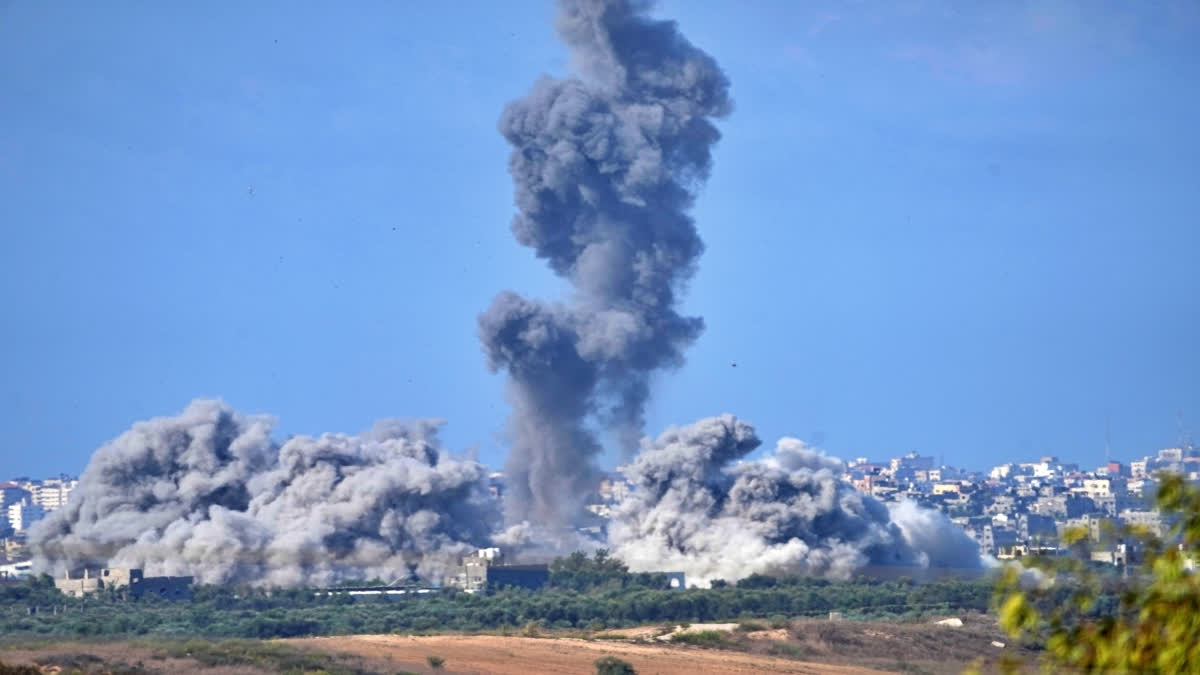New Delhi: When Hamas launched the surprise attacks from Gaza on Israel on October 7 that sparked a war that has left over 3,600 people dead on both sides so far, the Palestinian armed outfit must have been well aware that the Israeli retaliatory action would be beyond disproportionate.
And that is exactly what it has proved to be. While over 1,300 Israelis have been killed in the war till the filing of this report, the death toll in Gaza has crossed 2,300. Knowing very well that this would happen, then why did Hamas mount the attacks on Israel? Did it have something up its sleeve?
One theory that is gaining ground is that Hamas actually wants a ground invasion from Israel in Gaza. Proponents of this theory state that Hamas will actually use its expertise in building underground tunnels to counter the Israeli offensive. It will actually be an innovative approach on the part of Hamas to start an asymmetric war with a far more conventionally powerful Israel.
For over a decade now, the tunnels in Gaza have proved a crucial tool in the Hamas arsenal, enabling the militants to frustrate the powerful Israeli military and live to fight another day. The tunnels dug in Gaza were originally used for smuggling goods in and out of Egypt to circumvent an Israeli blockade. But militants belonging to Hamas and the Palestinian Islamic Jihad built up the tunnels to move rockets and rocket launchers, shield militants from detection by Israeli satellites and aircraft and stage attacks into Israeli territory.
The vast underground system includes storage rooms, electrical generators, command centres and supplies for Hamas’ fighters. Known also as “economic tunnels”, more than 1,000 are thought to have been dug beneath the border between Egypt and Gaza under the authority mainly of Hamas, who took over the small sliver of territory from Fatah in 2007.
According to the new theory, Hamas might as well use its tunnel-building expertise as a weapon. Tunnels have long been used as a defensive mechanism in times of war. But this time, Hamas may well turn tunnels into an offensive mechanism.
According to a “What If” memo prepared by the New Delhi-based independent think tank ImagIndia, Hamas can actually create a sea-water flood in Gaza by remotely exploding a bomb on the Mediterranean coast. What, one may well ask? How can it be possible? Incredibly, it is possible in terms of engineering. But first, one has to understand the geography of Gaza.
The Gaza Strip, or simply Gaza, is a narrow piece of land located on the eastern coast of the Mediterranean Sea, bordered by Israel to the east and north, and Egypt to the southwest. With a population of two million, on some 365 sq km, Gaza, if considered a top-level political unit, ranks as the third most densely populated in the world. It is one of the two Palestinian territories, alongside the West Bank.
According to the ImagIndia theory, about 25 percent of Gaza is below sea level. Of the four areas in Gaza that are below sea level, there are three in north and central Gaza – Beit Hanoun and Beit Lahiya in north Gaza and Gaza City in central Gaza. The other area below sea level is the Rafah crossing between Gaza and Egypt in the south.
Speaking to ETV Bharat, Robinder Sachdev, president of ImagIndia, explained that Hamas has the ability to flood low-lying areas with waters from the Mediterranean Sea. “At this point, the military advantage for Hamas will be in the north,” Sachdev said. “The Israeli military action will be in the north.”
Israel, it is worth mentioning, has ordered all civilians in north Gaza to evacuate to the south warning them that they will be on the firing line once the ground offensive starts. This has led to a huge humanitarian crisis.
Sachdev, an engineer by profession, explained that the known tunnels of Hamas are at an average of 50 feet under Gaza land. What Hamas can do is construct tunnels at a depth of just three to four feet below the ground linking the last two metres to the Mediterranean Sea coast.
“When Israel starts the invasion of Gaza, blast the sea connect,” he propounded. “The seawater will rush in via the tunnels and flood the low-lying areas. This will create a marshy belt of around four km making it virtually impossible for Israeli trucks and tanks to move. Above each such tunnel route running for one to four km, there will be a soft soil trap for Israeli tanks.”
Given the knowledge of the existence of the previous Hamas tunnels 50 feet deep under Gaza land, the US administration, in May this year, had approved the sale of $735 million in precision-guided weapons to Israel. The Israeli military also had the option to use US-made “bunker buster” GBU-28 bombs that it had previously acquired. Those munitions are designed to penetrate hardened targets deep underground, though the bombs leave massive craters and could inflict severe civilian casualties.
However, according to Sachdev, dropping the bunker busters in the event of Hamas resorting to the seawater flood bomb technique will further aggravate the situation. “The bunker bombs will actually create a wider area for flooding. Such bombs will create bigger problems,” he said. So, how convinced is he that Hamas has actually constructed such low-depth tunnels connecting to the sea?
“For scientists and engineers, it is the absolutely logical thing to do,” Sachdev signed off. One might well recall that Hamas had codenamed its attack against Israel ‘Operation Al Aqsa Flood’.
Also read: Video: Israeli airstrike kills senior Hamas commander responsible for Kibbutz Nirim massacre
Also read: Palestinian Islamic Jihad: The other front Israel will have to contend with in Gaza



